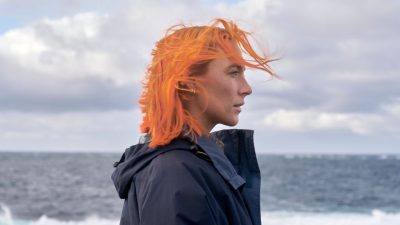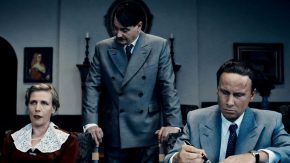Artist Victor Vasarely, born in Pécs, Hungary, then living and working in France, has a work called Homage to the movement which is a truly joint expression of visual arts and movement arts. His op-art pictures have their own dynamics, and when we look at them, we have the illusion that they are moving. This exciting language of expression inspired director-choreographer Balázs Vincze, artistic director of the 60-year-old Ballet Pécs, to create the show Vasarely Etudes, which will be showcased as an encore of the Bartók Spring International Arts Weeks. Creators promise a wonderful all-arts experience on 28 May, 7 pm. We talked to Balázs Vincze about it.
Entrance to the virtual theatre is free!
What are the parallels between Vasarely’s pictures and the world of movement?
There are many ways to discuss this question. Ballet Pécs celebrates its 60th anniversary, and its successes were also part of the vivid visual arts life in the city in the 1960s, ‘70s, ‘80s, which provoked so many artists to think together. In those eras, different art forms had been more connected and transferred into each other than nowadays in this ever so fast world. My basic idea was to bring them together again, as I believe that this tradition has to be kept even after so many years. Also, because Vasarely was born here in Pécs and that a museum of his works is in the city, it brings us a great opportunity to celebrate the 60th birthday of our dance company with him as part of a civic-cultural mission. My artistic approach was now to start from Vasarely’s geometric pictures and dream a show on the basis of them.

Which Vasarely pictures are featured in the show?
We chose ten artworks from the museum in Pécs, and I tried to give them a certain character. Recurring movements belong to every picture. For instance, if we look at the black-and-white pictures for a while, we notice that they have a certain dynamic which can be showcased with dance very well. I made it even stronger with the dancers often appearing from the picture, dressed up in its colours, so it’s really the pictures starting to move.
Actors, actresses, an opera singer and a musician are also part of the show. How are they connected to Vasarely’s art and this show?
They are there to make this show a real all-art experience and help different art forms get together. Actress Éva Vári, dancer Teodóra Uhrik, opera singer Atilla Kiss-B., actor Iván Kamarás, actress Anna Györfi and harmonica artist Tamás Kéméndi cooperate with the Ballet Pécs. There will be some singing and prose in the show indeed, but it would be too easy to have an artist recite a prose and the opera singer sing. This piece is about the undestroyable nature of culture. Éva Vári, Atilla Kiss-B. and Teodóra Uhrik have a huge experience in arts; they know culture and life so much that I guess they are the most credible people to express this. Apart from that, they have connections to Pécs and myself. Another generation is represented by Iván Kamarás, Anna Györfi and Tamás Kéméndi, who represent the continuity in the eternal and unstoppable world arts. Iván Kamarás’ mother was a founding member and an emblematic personality of Ballet Pécs, so having him reciting and moving on stage with us is a wonderful experience.
Vasarely called arts ‘the plastic image of the audience’ and wanted arts to be there for everyone. Is that something Ballet Pécs stands for, too?
We try to put the soul and the philosophy of Victor Vasarely in the centre of our show. Four of the cooperators mentioned above play such abstract figures that can be anyone, Vasarely’s friends, funders, fans, or his thoughts and soul. My friend György Böhm and myself wrote the texts for the piece which reflect the ever-present doubt within artists towards their art. The beginning of our show is kind of rude: this piece, built upon intensive visuality, starts with 30 seconds of a well-lit microphone stand and no movement at all. We can imagine Vasarely himself at this point, opening an exhibition. Then we go through this exhibition and evaluate everything in the end, all that wonder that was born in us.
How did you and composer Richárd Riederauer work together?
The most important thing was to think together and be open-minded. I sent the painting to scenery planner Balázs Cziegler, costume designer Fruzsina Nagy, as well as Richárd Riederauer and György Böhm, and we met two weeks later to show each other what ideas we had thought about, written up, planned. This first-round discussion inspired us eventually further, and we finalised everything based on that. Composer Richárd Riederauer has, for instance, given a sound to every little quadrant on a picture, and built up the music on that basis. We were all inspired by the pictures.
How open-minded is the audience for a show that brings them out of their comfort zone so much?
It is always a hard job to express ideas through dance, as it is a genre for a specific audience. We cooperated with the Müpa, and I have never been disappointed with them. The audience here is great – they like dance, there are many of them, and they appreciate both the spectacular visualities of this show and its serious and deep thoughts. I always address my pieces to the audience and care about their points of view. This will be a fantastic experience, a special visual world, and art forms strengthen each other here, with prose and music helping the message expressed by movements to surely arrive.
Does it happen often that you look at a visual artwork and start to think about your profession?
I experience that it as a learning process. During the last 3-4 years, I started to go to exhibitions related to my work, and now it has its routine. With more and more experiences, I get that feeling more and more. I’m very happy to have had the chance to choreograph this piece.
Have you already made some thoughts about what to play now that the lockdown is almost over?
We keep practicing for our show, AdamEve on 26 June, which will premiere in the Budapest Dance Theatre. In Pécs, we will play it in November. We are always happy to get to the capital city with our shows – the more people we can get to, the merrier.
Interview: Anna Rácz
Translation: Zsófia Hacsek



























Comments